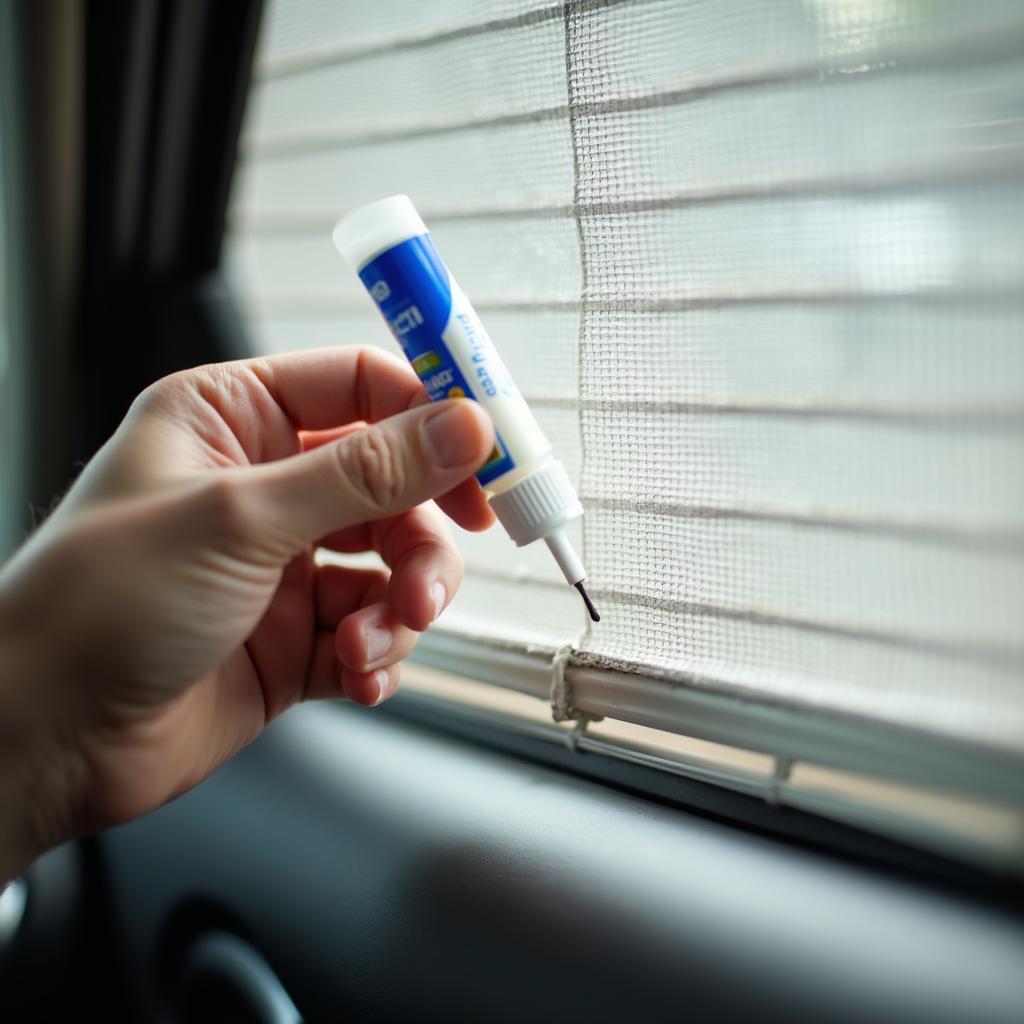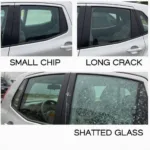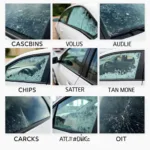Choosing the best glue to repair your car window blind can be a hassle, especially with so many options available. Whether you’re dealing with a drooping blind, a stubborn tear, or a complete detachment, understanding your needs and the different adhesive solutions is crucial for a long-lasting fix. This guide will navigate you through the process, providing insights into the best glue options for various car window blind repairs.
Why Choosing the Right Glue Matters
Using the wrong adhesive can lead to messy results, further damage to your blind, and even compromise the aesthetics of your car’s interior. A strong bond is essential to withstand heat, humidity, and the constant movement of the blind itself.
Types of Glue for Car Window Blind Repair
1. Cyanoacrylate Glue (Super Glue)
Known for its quick-drying and strong bonding capabilities, super glue is a popular choice for small repairs on car window blinds. It’s ideal for fixing minor tears, reattaching detached slats, or securing loose fabric. However, its fast-drying nature requires precise application to avoid visible marks.
2. Fabric Glue
Specifically designed for fabrics, this type of glue offers a more flexible bond compared to super glue. This flexibility is crucial for car window blinds that undergo constant movement and rolling. Fabric glue is a great option for larger tears or when attaching fabric to the blind mechanism.
3. Spray Adhesive
Providing a strong and even bond over large areas, spray adhesive is suitable for reattaching large sections of fabric or fixing a completely detached blind. It’s essential to work in a well-ventilated area and protect the surrounding car interior when using this type of adhesive.
Factors to Consider When Choosing Glue
- Type of Damage: The extent and type of damage will determine the most appropriate glue.
- Material: Consider the material of your car window blind. Fabric glue works best for fabric blinds, while super glue might be suitable for plastic or vinyl.
- Drying Time: Choose a glue with a drying time that suits your skill level and the complexity of the repair.
- Flexibility: Opt for a flexible glue that can withstand the movement of the blind without cracking or becoming brittle.
- Color: Some glues dry clear, while others might leave a white residue. Consider the visibility of the glue after it dries.
Tips for a Successful Repair
- Clean the Surface: Ensure the surfaces to be bonded are clean and dry before applying any glue.
- Use Sparingly: Apply a small amount of glue to avoid excess oozing and messy results.
- Apply Even Pressure: Once the glue is applied, press the surfaces together firmly and evenly for the recommended time.
- Mask Surrounding Areas: Protect the surrounding car interior from accidental glue spills using masking tape or plastic wrap.
Conclusion
Repairing your car window blind doesn’t have to be a daunting task. By choosing the best glue for the job and following these tips, you can achieve a long-lasting and discreet repair. Remember to prioritize quality, consider the specific needs of your repair, and always follow the manufacturer’s instructions for the best results.



